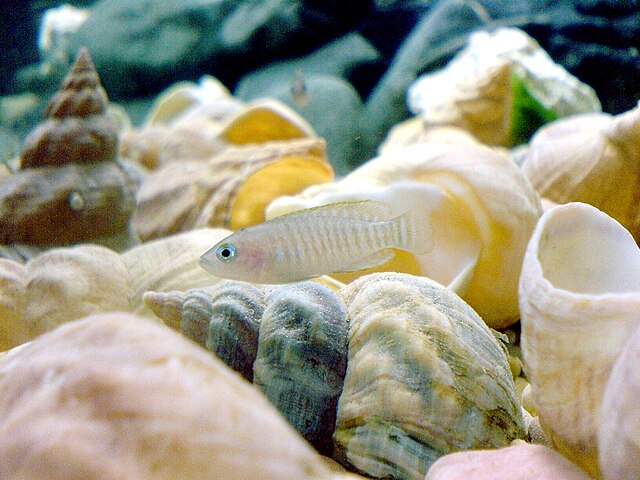Neolamprologus is a genus of cichlids endemic to eastern Africa with all but one species, Neolamprologus devosi from the Malagarasi River, occurring in Lake Tanganyika. It is the largest genus of cichlids in Lake Tanganyika and also the largest genus in the tribe Lamprologini, which includes Altolamprologus, Chalinochromis, Julidochromis, Lamprologus, Lepidiolamprologus, Telmatochromis and Variabilichromis. The latter is a monotypic genus doubtfully distinct from Neolamprologus.
Neolamprologus
Neolamprologus cylindricus
Neolamprologus multifasciatus
Lake Tanganyika is an African Great Lake. It is the second-oldest freshwater lake in the world, the second-largest by volume, and the second deepest, in all cases after Lake Baikal in Siberia. It is the world's longest freshwater lake. The lake is shared among four countries—Tanzania, the Democratic Republic of the Congo, Burundi, and Zambia—with Tanzania (46%) and the DRC (40%) possessing the majority of the lake. It drains into the Congo River system and ultimately into the Atlantic Ocean.
Lake Tanganyika from space, June 1985
Lake Tanganyika eastern Shore in Kagongo Ward, Kigoma Region, Tanzania
Clear water lake of Lake Tanganyika in Kagongo Ward, Kigoma Region, Tanzania
A biologist collecting samples in 2020 in the murky waters of Lake Tanganyika for a study on the diet adaptations of cichlid fishes to better understand their evolution and speciation.







